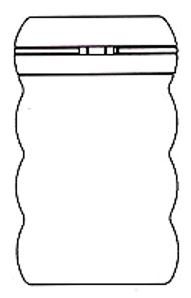Figurative mark for flat containers refused for confectionery

In affirming the EUIPO’s decision to refuse the registration of a figurative mark for confectionery containers, the EU General Court has confirmed that the principles developed in the context of 3D trademarks are also applicable to 2D trademarks, as Valerie Annan explains.
Of the requirements for a European trademark (EUTM) to be registered at the European Union Intellectual Property Office (EUIPO), one of the most important can be found in article 7(1)(b) of the EU Trademark Regulation (EUTMR). It stipulates that a trademark will be refused if it lacks any distinctive character. In other words, if it is unable to identify and distinguish the relevant goods or services. To determine whether a sign has distinctive character, it is necessary to look at the overall impression of the trademark. However, this does not mean that individual elements of a mark should not be taken into account.
Figurative marks and the need for distinctive character
In 2020, confectionery manufacturer Perfetti Van Melle submitted a EUTM application to cover various goods in class 30: sweets, mints, chocolate, chewing gum, cakes, sugar and cocoa. The figurative mark consisted of a two-dimensional (2D) drawing of a cylindrical container with a wavy outline (pictured below).
 However, the EUIPO refused the application on the grounds that it lacked distinctive character, finding that the relevant public (namely the moderately informed and reasonably observant consumer) would perceive the mark as merely a variant of existing cylindrical confectionery packaging. Due to the lack of word elements and additional decorative elements, the sign did not sufficiently distinguish itself from other packaging and could not be used to indicate the origin of the goods.
However, the EUIPO refused the application on the grounds that it lacked distinctive character, finding that the relevant public (namely the moderately informed and reasonably observant consumer) would perceive the mark as merely a variant of existing cylindrical confectionery packaging. Due to the lack of word elements and additional decorative elements, the sign did not sufficiently distinguish itself from other packaging and could not be used to indicate the origin of the goods.
Perfetti Van Melle contested the decision on the basis that the EUIPO had applied principles developed in the context of three-dimensional (3D) marks in its assessment of distinctiveness – thus, the bar had been set too high. In addition, the confectionery manufacturer argued that the relevant public would perceive the 2D mark as a flat shape rather than cylindrical, such a mark being unique compared to the rest of the confectionery market. Unfortunately for Perfetti, EUIPO’s Board of Appeal did not agree. On appeal, the dispute was passed to the EU General Court.
Can shapes be registered?
The EU General Court upheld the Board of Appeal’s judgement. It found that both 2D and 3D marks must deviate significantly from the standards in a specific market to have sufficient distinctive character. Based on submitted images of packaging methods already used for confectionery, this threshold was not met in this case. Perfetti’s argument that the figurative mark could also be interpreted as non-cylindrical was also not convincing, according to the EU General Court. In fact, the lack of perspective in the drawing of the mark gives more reason for the general public to perceive the mark as a cylindrical container, given the public’s frame of reference.
With its ruling, the General Court underlines that the perception of the relevant market does not necessarily coincide with a trademark applicant’s intended perception. It is necessary, therefore, to keep this in mind when applying for shape or figurative marks. Nonetheless, the distinctive character requirement is not an unattainable threshold; it could just be a matter of more thorough research and a creative drawing.
For further information or specific questions about registering figurative marks, speak to your Novagraaf attorney or contact us using the button below.
Valerie Annan works in Novagraaf’s Knowledge Management department. She is based in Amsterdam.